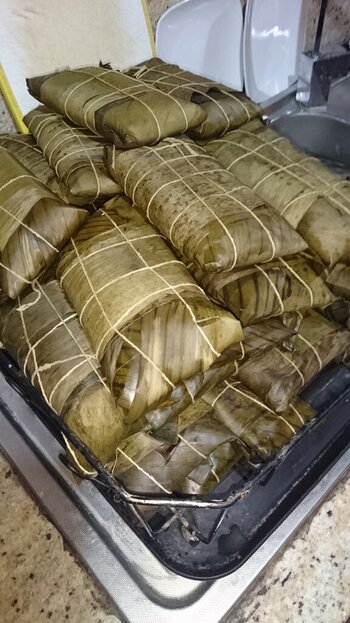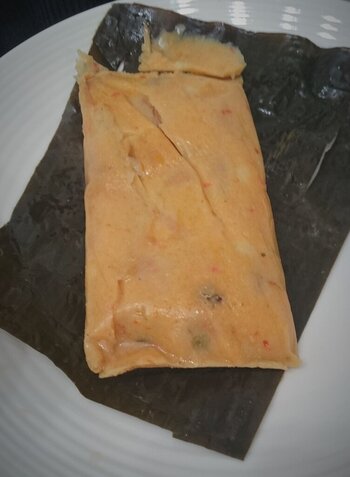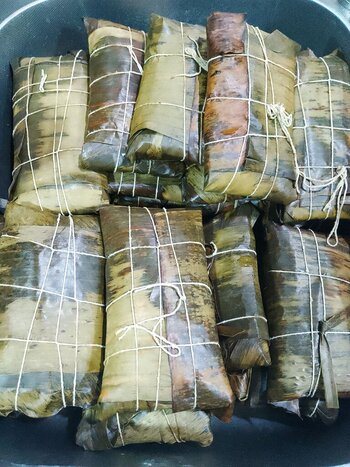karadekoolaid
Legendary Member
The beginning of November brings a shiver of excitement to thousands of Venezuelan families. It's time to prepare traditional Xmas foods: "pan de jamón" (Ham bread), "ensalada de gallina" (Chicken salad) and the unbelievable "hallaca" .
An hallaca (pronounced "Ay-Yak-uh") is a meat-and-vegetable-filled corn tamale, wrapped in smoked plantain leaves, and then cooked/boiled in water. In its simplest form, it is a nightmare to prepare, with a mile-long list of ingredients, compounded by dozens of regional variations. Complicated versions take up to 3 days. However, despite the culinary difficulty, the hallaca is prepared in family. Mums, dads, kids, cousins, aunt and uncles, grandparents and even neighbours all participate in its elaboration. Dozens, maybe even hundreds of hallacas are made at one time. Christmas Eve (which is when Christmas is celebrated here) and 31st December involve large family celebrations where the hallaca is centre stage.


An hallaca (pronounced "Ay-Yak-uh") is a meat-and-vegetable-filled corn tamale, wrapped in smoked plantain leaves, and then cooked/boiled in water. In its simplest form, it is a nightmare to prepare, with a mile-long list of ingredients, compounded by dozens of regional variations. Complicated versions take up to 3 days. However, despite the culinary difficulty, the hallaca is prepared in family. Mums, dads, kids, cousins, aunt and uncles, grandparents and even neighbours all participate in its elaboration. Dozens, maybe even hundreds of hallacas are made at one time. Christmas Eve (which is when Christmas is celebrated here) and 31st December involve large family celebrations where the hallaca is centre stage.




